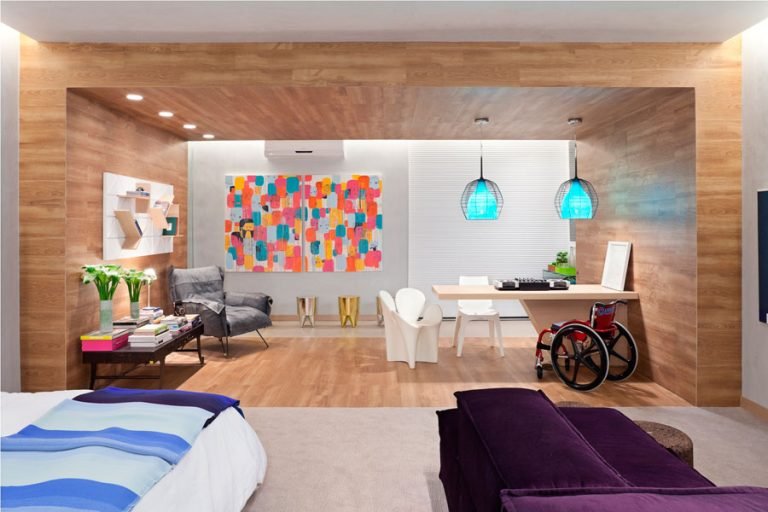
Introduction
Aging gracefully doesn’t have to mean leaving the home you love. More and more homeowners are embracing “aging in place”—remodeling their homes to be safe, accessible, and comfortable for the long term.
Instead of moving into assisted living or downsizing prematurely, many families are choosing to future-proof their homes with thoughtful upgrades. From barrier-free bathrooms to smart home technology, aging-in-place remodeling blends comfort, independence, and modern design.
In this article, we’ll explore:
- What aging in place means
- Why it’s becoming a top remodeling trend
- Essential upgrades for every part of the home
- Smart design strategies that balance accessibility with style
- The long-term benefits for homeowners and families
Why Aging in Place Remodeling Matters
1. Longer Life Expectancy
People are living longer—and want to maintain independence. Remodeling ensures your home adapts to your needs as you age.
2. Rising Assisted Living Costs
Senior living facilities can cost $4,000–$8,000 per month, depending on location. Remodeling is often far cheaper in the long run.
3. Emotional Value of Home
Your home holds memories. Staying in it provides a sense of security, stability, and comfort.
4. Multi-Generational Living
Many families now live with multiple generations under one roof. Accessible design ensures harmony for kids, adults, and seniors alike.
Key Remodeling Ideas for Aging in Place
Let’s break it down room by room:
1. Entryways & Hallways
- Zero-step entryways: Remove stairs at entrances; add gently sloped ramps.
- Wider doorways (36 inches or more): Ensures easy wheelchair and walker access.
- Lever-style handles: Easier to operate than traditional knobs.
- Motion-sensor lighting: Prevents accidents in dimly lit areas.
2. Living Room & Common Spaces
- Open floor plans: Minimize clutter and obstacles.
- Slip-resistant flooring: Vinyl, cork, or textured laminate are safer than polished stone or glossy tiles.
- Comfortable, firm seating: Chairs and couches with sturdy arms make standing up easier.
- Smart lighting: Voice-activated or app-controlled systems allow easy adjustments.
3. Kitchen Upgrades
- Pull-down shelving: Brings upper cabinets within easy reach.
- Side-opening ovens & microwaves: Prevents bending and heavy lifting.
- Countertops at varied heights: Accommodates standing and sitting users.
- Anti-scald faucets: Prevents burns.
- Non-slip mats & flooring: Adds safety without sacrificing style.
4. Bathrooms (Most Critical Area)
Bathrooms are the top accident zone for seniors. Safety-first remodeling here is essential.
- Curbless showers: Barrier-free entry reduces tripping risks.
- Grab bars: Install near toilets, showers, and tubs.
- Shower seating: Built-in or fold-down benches.
- Handheld showerheads: Easier to control while seated.
- Comfort-height toilets: Slightly taller to make sitting and standing less strenuous.
- Slip-resistant tiles: Essential for floors and shower areas.
5. Bedrooms
- First-floor master suite: Eliminates the need to climb stairs daily.
- Adjustable beds: Improves comfort and mobility.
- Closet accessibility: Pull-down rods and sliding doors make dressing easier.
- Dimmable bedside lighting: Reduces strain and prevents trips at night.
6. Stairs & Elevators
- Stairlifts: A cost-effective option for two-story homes.
- Residential elevators: More expensive, but increasingly common in modern remodels.
- Contrasting stair edges: Improves visibility and reduces falls.
7. Smart Home Technology
Technology is revolutionizing aging in place:
- Voice assistants (Alexa, Google Home): Control lights, appliances, and locks hands-free.
- Smart doorbells (Ring, Nest): Adds security and convenience.
- Automated medication dispensers: Reduces missed doses.
- Fall detection systems: Wearable devices or AI-powered cameras that notify family if an accident occurs.
Balancing Accessibility with Style
Many people worry accessible design looks too “clinical.” But with today’s materials and creative design, you can have both function and beauty.
- Grab bars disguised as towel racks → Stylish yet functional.
- Walk-in showers with glass enclosures → Spa-like while being barrier-free.
- Custom cabinetry → Blends accessibility with luxury finishes.
- Open shelving & lighting accents → Keeps spaces bright and modern.
Long-Term Benefits of Aging-in-Place Remodeling
✅ Independence & confidence → Homeowners feel empowered to live life on their terms.
✅ Financial savings → Avoids long-term costs of senior living facilities.
✅ Higher resale value → Accessible homes appeal to a growing market of older buyers.
✅ Family peace of mind → Loved ones know the home is safe and supportive.
✅ Flexibility for all ages → Accessibility upgrades help not just seniors, but kids, guests, and those with temporary injuries.
Real-Life Case Studies
- Case 1: Bathroom Remodel for Safety
A couple in their 70s replaced their tub with a curbless shower, slip-resistant flooring, and built-in bench. The design blended spa-style aesthetics with safety, giving them independence and peace of mind. - Case 2: Whole-Home Future-Proofing
A family remodeled their two-story home by adding a first-floor bedroom suite, stairlift, and smart lighting system. The upgrades cost less than two years of assisted living expenses. - Case 3: Kitchen Transformation
A homeowner redesigned her kitchen with pull-down shelves, lower counters, and anti-scald faucets—making it safer and more convenient without sacrificing style.
Conclusion
Aging in place remodeling is not just about preparing for the future—it’s about creating a home that adapts to your lifestyle, enhances independence, and nurtures comfort.
By making thoughtful upgrades today, you ensure your home remains a safe, stylish, and welcoming place for years to come.
Whether you’re approaching retirement or planning ahead, future-proofing your home is an investment in freedom, dignity, and peace of mind.








